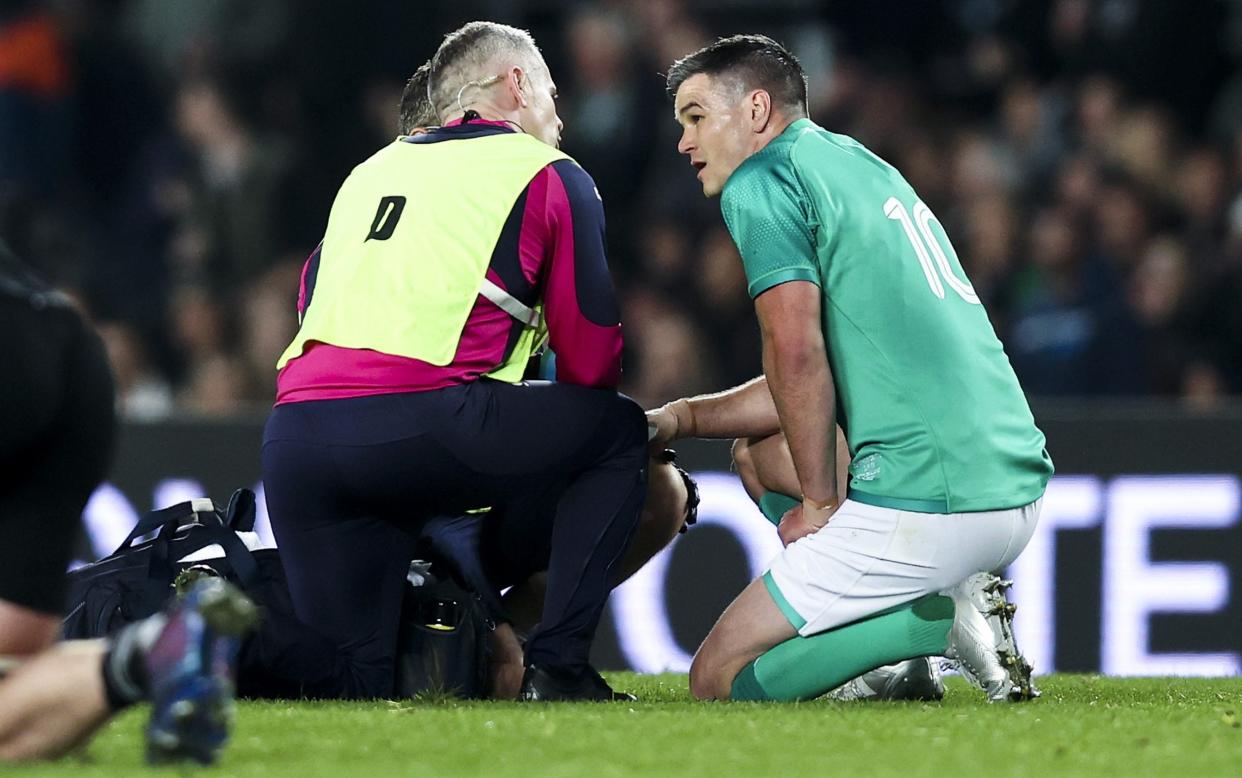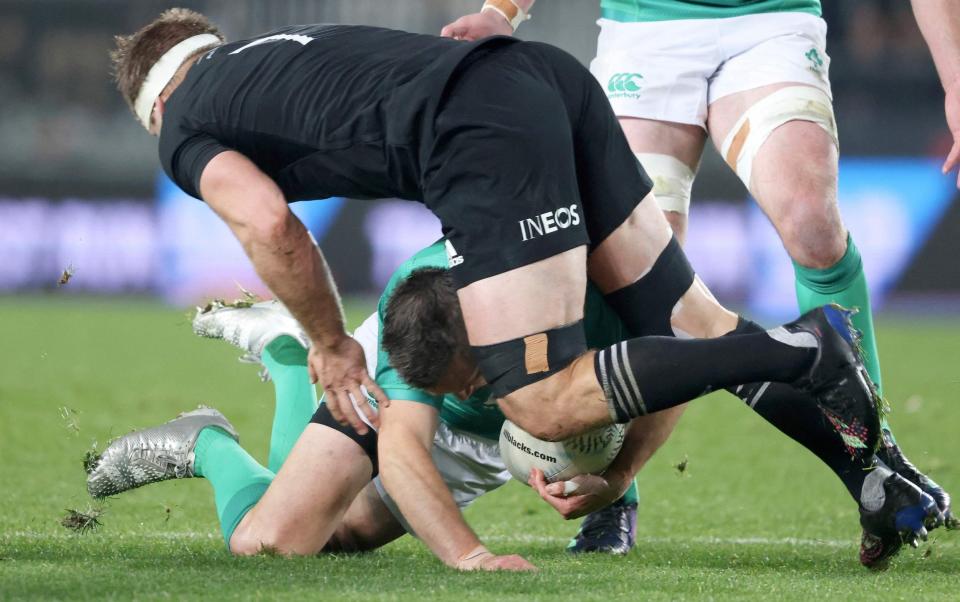Concussion activists blast HIA protocols as 'not fit for purpose' after Johnny Sexton decision

Concussion activists have suggested that rugby union’s head injury assessment process is not fit for purpose after Ireland selected Johnny Sexton to start against New Zealand a week after the veteran fly-half was helped from the field in the first Test.
Sexton failed his first initial head injury assessment (HIA), which identifies suspected concussion, at Eden Park following a first-half collision with Sam Cane, but passed the more substantive second HIA later that evening. Sexton then passed a third assessment (HIA3), which aims to rule concussion in or out. The player was therefore deemed not to be concussed.
Under current protocols, despite World Rugby introducing longer lay-offs for players like Sexton that have a history of head injuries, that is enough for a player to be passed fit and he will captain Ireland on Saturday in Dunedin.
Progressive Rugby, who are campaigning for greater awareness of concussion in sport, believe that the best course of action would have been to err on the side of caution with regards to Sexton.
“Elite players who fail an in-game HIA1 have, by definition, displayed cognitive dysfunction requiring their removal,” said a spokesperson for the organisation.
“In our view, this is sufficient evidence, regardless of subsequent testing, to exercise extreme caution for the good of both their short and long-term health.
“This caution must be further amplified in players with a history of brain injury, as evidence is they are at higher risk of sustaining further concussions and other injuries.”
On the HIA protocol as a whole, Progressive Rugby were more scathing. Just last week, after a review into the incident by New Zealand Rugby, it was found that Jeremy Loughman, the Ireland prop, should not have returned to the field after staggering to the floor during a mid-week match against the Maori All Blacks. However, having passed his HIA1, Loughman did return.

“Regrettably, the HIA is being exposed,” added Progressive Rugby. “Last week the process again failed to diagnose a clear and obvious brain injury [Loughman], while three days later we are told it has identified a phantom one [Sexton].
“The fact is that there remains no examination by any expert that can demonstrate a brain has healed and is not at risk of further damage.
“As such, if player welfare is truly the game’s number one priority, the only option must be to err on the side of caution – otherwise the new elite protocols are failing in their key purpose.”
Ian Foster, the New Zealand head coach, was asked to compare Sexton’s situation with that of Sam Whitelock, the All Blacks lock who has been stood down for 12 days in line with new World Rugby protocols. Foster did not comment on the handling of Sexton but stressed that the decision on Whitelock had been “crystal clear”.
When approached for comment, World Rugby outlined that “concussion is formally diagnosed by qualified doctors at the HIA2 and HIA3 assessments as part of the head injury assessment protocol, with the exception of any player displaying obvious symptoms who will be immediately removed from play.
“Attempting to diagnose a serious medical condition like concussion from afar, without all the relevant information including a player’s medical history, is irresponsible and no substitute for the world-leading medical care received by elite rugby players,” said a spokesperson.
“Doctors are supported by the Head Injury Assessment and recently updated return to play protocols put in place by World Rugby.
“These protocols are developed using scientific evidence and independent expert opinion which are kept under constant review, as we never stand still on player welfare.”

 Yahoo Movies
Yahoo Movies 
